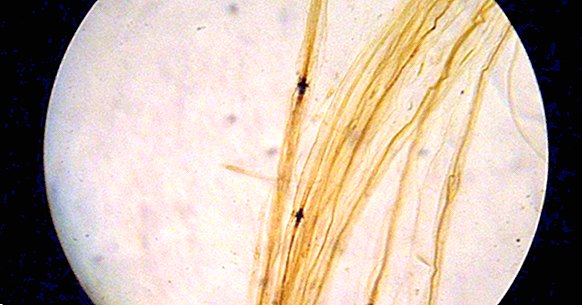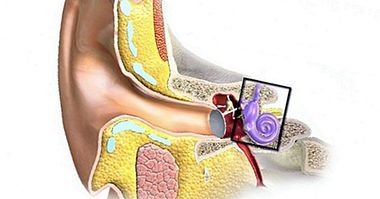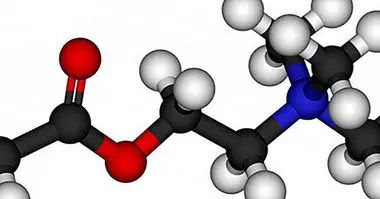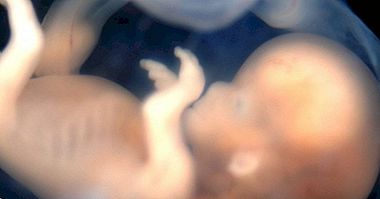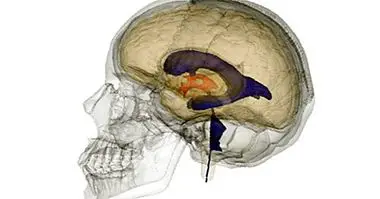Ranvier nodules: what they are and how they serve neurons
Ranvier nodes are cellular substructures that are part of the neuronal system. Among other things are responsible for regulating the electrical signals between neurons, that is, they are a very important part to maintain the activity of the nervous system.
In this article we will see what are the nodules of Ranvier , what are its main functions and what pathologies of the nervous system have been associated with these.
- Related article: "Types of neurons: characteristics and functions"
What are Ranvier nodules?
Ranvier nodules, or Ranvier nodes, are small openings that are interspersed between the myelin sheaths that cover neuronal axons .
To explain it better, let's go in parts: among other things, the nervous system of vertebrates is composed of long propagations of neurons that connect with each other. These propagations are called "axons", arise from the soma (the body) of the neuron and have the shape of a cone that stretches as it extends through the neural network.
In turn, the axons are covered by a thick layer of fatty substances and proteins called "myelin". This thick layer has the shape of a sheath whose function is stimulate the transmission of nerve impulses between neurons . What myelin does is protect the neural network; It serves as an insulator that accelerates nerve transmission between axons.
These pods or layers of myelin are not uniform or completely smooth, but are composed of small subsidence or grooves interspersed along the axon, which we call nodules or nodes. The first to describe both the myelin and its nodes was the French physician and histologist Louis-Antoine Ranvier in the year 1878. That is why until today, these subsidence are known as nodes or nodes of Ranvier.
- You may be interested: "What are axons of neurons?"
Its duties?
Ranvier nodes are fundamental to maintain the function of myelinated axons. They are plots of a very small length that allow the contact between the axon with the extracellular space , and with this, they make possible the entrance of electrolytes of sodium, potassium, and other chemical elements.
Very broadly, the Ranvier nodes facilitate the expansion of electrical impulses which we call "action potential" and allow the electrical activity that passes through the axons to be maintained at an adequate speed until reaching the body of the neuron.
Being a kind of grooves that are interspersed in the axon, the nodes of Ranvier allow the electrical activity to transit as small jumps between node and node until reaching the neuronal nucleus. This last one accelerates the speed of the communication between neurons, that is to say, the synapse, with which, it is possible that all the activity associated to the encephalon takes place.
Other characteristics of the nodes
It is now known that small changes in the functioning of Ranvier nodules can cause large changes in the action potentials, and with this, in the activity of the nervous system. The latter has been related especially to the elements that make up the nodes.
The nodes of Ranvier are composed of channels that allow the passage of the necessary substances to maintain the electrical activity, especially of potassium and sodium. In these channels, the total voltage change in the action potentials in the membrane is experienced. This is why the Ranvier nodes are highly populated areas of protein material .
It is a necessary condition that there is a sufficient number of channels to avoid faults in the propagation of the electric current. That is to say that a significant amount of channels is necessary to ensure the rapid activation of the channels, and with this, the action potentials.
Diseases and related medical conditions
For these nodes to be formed and function correctly, a series of quite complex interactions between the axon and the cells that cover it must occur.
The complexity of these interactions between the nodes and the regions that surround them makes it possible to develop pathologies of the nervous system associated with the functioning of the nodes and more specifically, related to the functioning of the channels that allow the entry of substances and electrical communication.
Among other things, these pathologies have the common characteristic that a process of demyelination occurs (the damage that occurs in the layers of myelin that line the axons). The demyelination causes the electrical activity to be modified in an important way , reducing the speed of the impulse and the response, and in some cases it causes them to even get lost. The consequence is a disorganization of the nervous system.
The conditions to which the functioning of the Ranvier nodules has been associated are very diverse and are still under study. They have been related from Autism Spectrum Disorder, different Epilepsy Syndromes and fibromyalgia, to autoimmune disorders such as Guillain-Barré Syndrome.
Bibliographic references:
- Arancibia-Carcamo, L. and Attwell, D. (2014). The node of Ranvier in CNS pathology. Acta Neuropathologica, 128 (2): 161-175.

